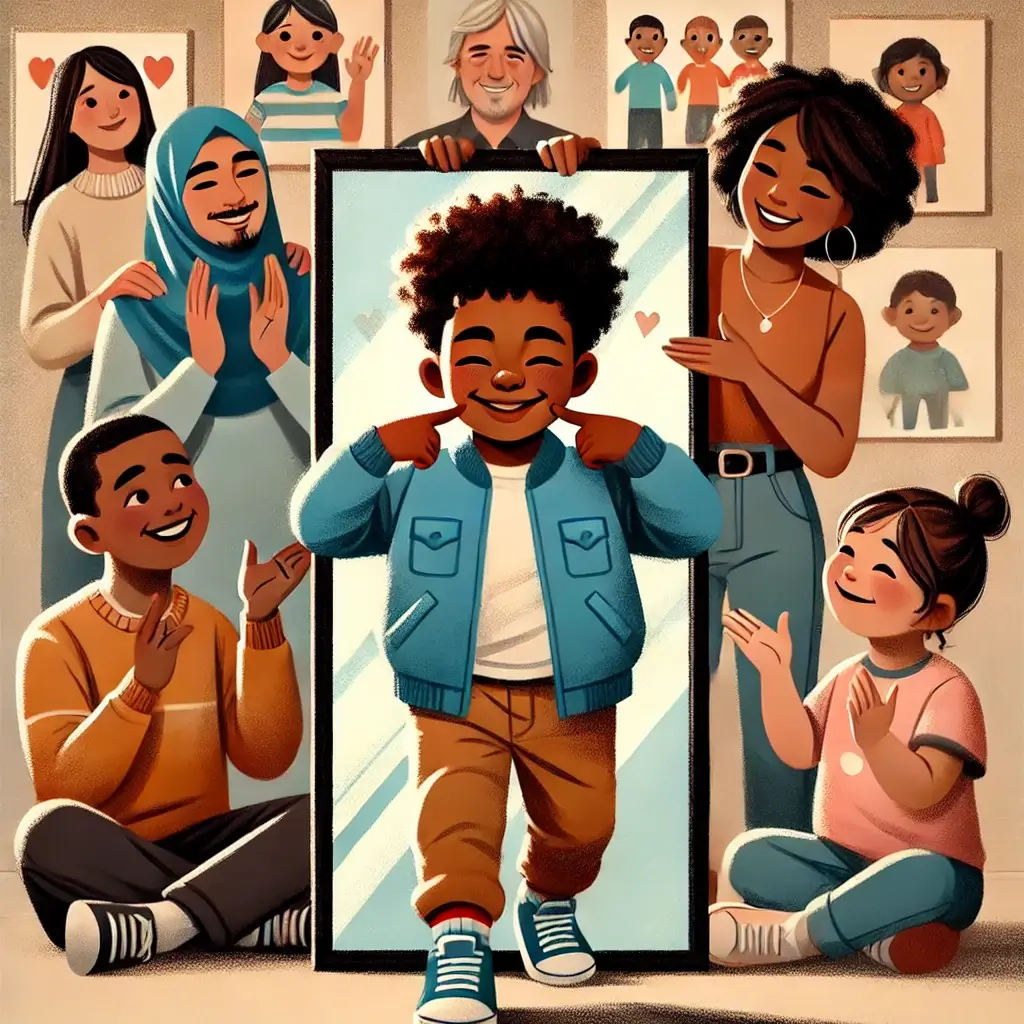Early Development of Body Image Awareness
Understanding how children develop body image is essential for parents aiming to nurture their children’s self-esteem and emotional well-being. Body image awareness in young children begins remarkably early, with children as young as three forming ideas about their bodies. These ideas are influenced by their immediate surroundings, media exposure, and family dynamics. Research reveals that by the ages of 3-6, nearly 45% of children already express concerns about their appearance, underscoring the importance of early intervention (Journal of Child Psychology, 2024).
Impact of Environmental Messages
Dr. Elena Martinez, a child psychologist, emphasizes that “even seemingly harmless comments about appearance can shape a child’s body image perception.” During early childhood, children internalize messages from parents, caregivers, peers, and media, which influence their self-concept and self-esteem. If these messages focus on physical attributes, children may adopt negative beliefs about body image in childhood that persist into adolescence and adulthood.
Importance of Parental Understanding
For parents, understanding the developmental milestones and external influences on body image is crucial. Supporting a body-positive environment for children at home not only fosters confidence but also builds resilience against societal pressures.
Key Developmental Stages in Body Image Formation
Childhood body image development is shaped by several key stages, each presenting unique challenges and opportunities for parents:
Ages 2-3: At this stage, children begin recognizing themselves in mirrors and photographs. They also start to notice differences in appearance, initiating basic comparisons. Parents should focus on reinforcing positive messages about uniqueness and individuality.
Ages 4-5: As children grow more self-aware, peer and media influences become more pronounced. Comments or images from television, books, or peers can start shaping their understanding of “ideal” bodies. Parents can counteract this by ensuring children consume media that represents a range of body types.
Ages 6-7: Social comparisons in early childhood peak, and children start evaluating themselves against others. This period is critical for building self-esteem and addressing concerns like negative self-talk or social withdrawal.
Research Findings on Body Image Development
A 2024 study published in Early Development Studies found that children in supportive body-positive environments were 60% less likely to develop body dissatisfaction by age eight. This emphasizes the importance of cultivating supportive and inclusive home and social settings.
Identifying Warning Signs
Parents must stay alert for early signs of body image struggles in children, which may manifest as:
Behavioral Changes: Avoiding activities like swimming or dancing due to self-consciousness, expressing reluctance to attend social events, or showing changes in eating habits.
Emotional Indicators: Anxiety, social withdrawal, or verbal expressions of shame and dissatisfaction with their bodies.
If these signs appear, parents should seek guidance from pediatricians, psychologists, or school counselors. Early intervention for body image issues can mitigate the risk of long-term issues, including low self-esteem or disordered eating.
Creating a Body-Positive Home Environment
Creating a body-positive home environment is one of the most effective ways parents can support their children. Here are practical steps:
Use Body-Neutral Language: Avoid commenting on physical appearance—yours or your child’s. Instead, emphasize abilities, effort, and character traits. For example, instead of saying “You look so pretty,” say “You worked really hard on that drawing!”
Model Positive Behavior: Children learn by observing. Parents modeling positive body image who speak positively about their bodies and avoid criticizing their appearance help set a powerful example.
Encourage Media Literacy: Discuss how media often portrays unrealistic body standards. Teach children to question and critically evaluate the images and messages they see.
Focus on Health and Enjoyment: Encourage physical activities that prioritize fun and health rather than competition or appearance. Activities like family hikes or dancing can foster a positive association with movement.
Diversify Representation: Expose children to books, shows, and toys that represent various body types, abilities, and ethnicities.
Community Impact on Body Image Development
The family environment is critical, but so is the broader community. Schools, childcare centers, and extracurricular activities should reinforce the body-positive values in childhood development. Collaborative efforts between parents and educators can amplify these messages.
Dr. Michael Chen, a developmental specialist, advises, “Parents should work with schools to ensure children are exposed to diverse role models and inclusive practices.” For example, schools can incorporate lessons on diversity and self-acceptance into their curricula, and parents can reinforce these teachings at home.
Final Insights on Childhood Body Image Development
Developing a healthy body image during early childhood is a multifaceted process requiring parental involvement, positive messaging, and a supportive environment. Research consistently shows that early interventions for positive body image, such as promoting diversity and encouraging critical thinking about media, significantly reduce the likelihood of body image concerns later in life (Body Image Research Review, 2024).
By taking proactive steps, parents can help their children grow into confident, self-assured individuals who value their abilities and character over appearance. Dr. Martinez concludes, “Empowering children with the tools to navigate societal pressures and build self-esteem is one of the greatest gifts a parent can give.”
Research References
Journal of Child Psychology. (2024). “Early Body Image Concerns in Young Children.”
Early Development Studies. (2024). “Body-Positive Environments: Longitudinal Effects on Childhood Self-Esteem.”
Body Image Research Review. (2024). “Strategies for Promoting Positive Body Image in Early Childhood.”
Child Mental Health Quarterly. (2024). “The Role of Parents in Body Image Development.”
Developmental Psychology Research. (2024). “Warning Signs of Body Image Issues in Early Childhood.”

